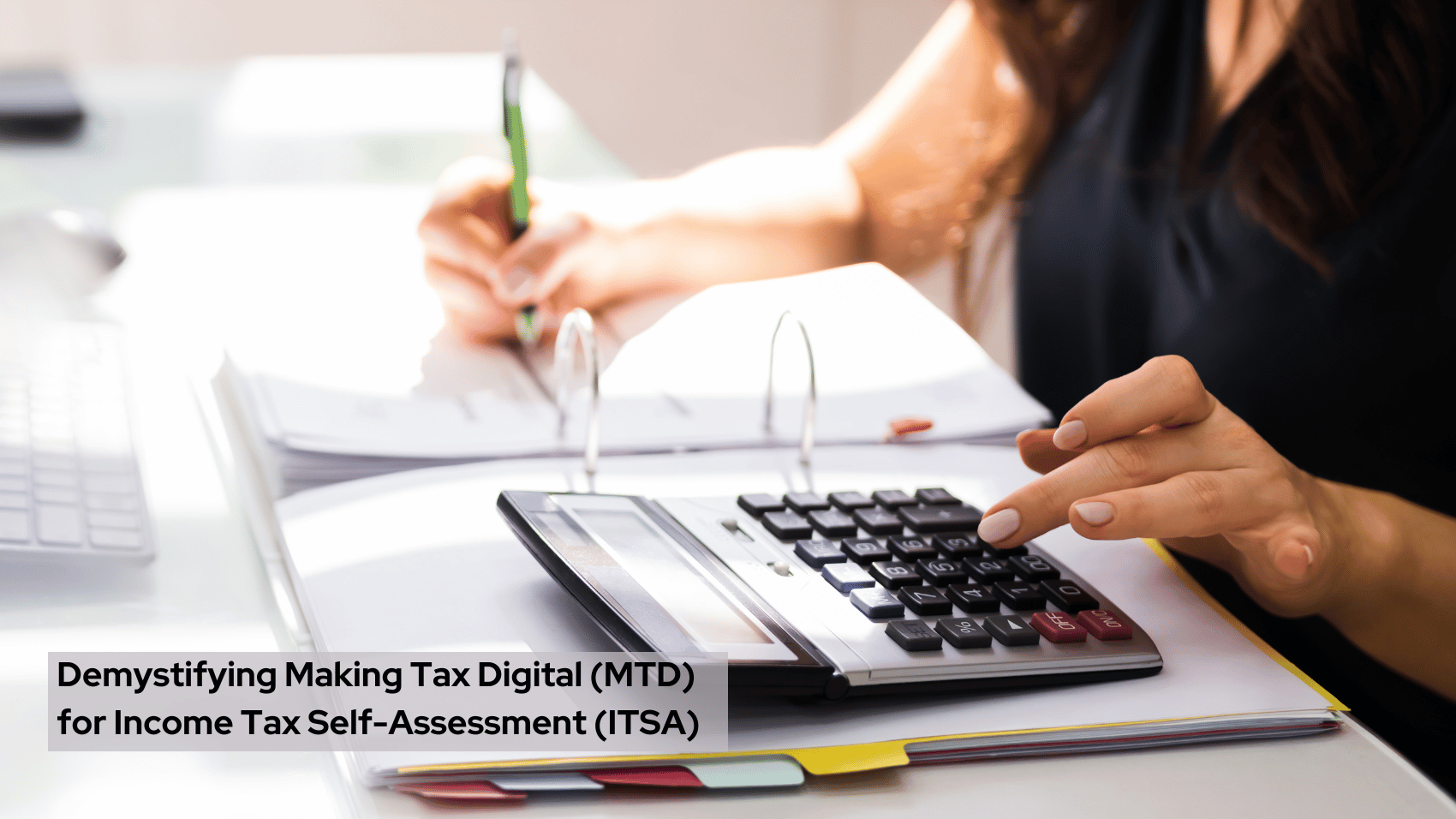Welcome, accounting superheroes! Are you prepared to navigate the realm of Making Tax Digital (MTD) for Income Tax Self-Assessment (ITSA)? If you find yourself bewildered by the acronyms, fear not. This blog is your informative companion, ready to unpack the essentials and address burning inquiries you and your clients may have.
The MTD Timeline: When Does MTD for ITSA Roll Out?
Mark your calendars for April 2024-the pivotal date. Starting then, any self-employed individual or landlord earning more than £10,000 annually from business or property income must comply with MTD for ITSA. For businesses above the VAT threshold (now £90,000 as of April 2024), MTD compliance has been mandatory since 2019.
HM Revenue & Customs (HMRC) has meticulously planned the implementation of MTD for ITSA. In 2023, HMRC fortified its strategies, ensuring that all aspects of MTD’s design were viable. The development of necessary IT changes adheres to a rigorous methodology, assessing costs and work requirements for each alteration.
Adoption Statistics: How Accounting Firms Embrace MTD
Athow explained that HMRC’s ongoing 10-year plan, now in its fourth year, has been primarily focused on foundational improvements. This includes updating legislation and enhancing technical infrastructure for customer accounts. Key legislative changes have modernized outdated laws to meet the requirements of a digital tax system. Additionally, incremental progress has been made, such as digitizing child benefit administration and introducing the HMRC mobile app for convenient taxpayer access.
Regarding the MTD ITSA deadline, Athow acknowledged its complexity but highlighted HMRC’s efforts to simplify processes since announcing the revised 2026 deadline. Despite challenges, HMRC remains committed to meeting this target.
The delay and revised scope announced in December 2022 allowed HMRC to reassess delivery methods. Athow emphasized the importance of stakeholder feedback from agents, taxpayers, and the software industry to enhance the efficiency of MTD ITSA. Athow expressed hopes that HMRC’s increased transparency in policy development is evident. This approach has already led to simplifications in quarterly updates and year-end processes.
Although certain MTD elements are fixed, Athow assured that HMRC remains open to addressing specific issues, such as aligning VAT and MTD ITSA reporting dates. Finally, Athow emphasized the importance of collaboration with technology vendors, agents, and taxpayers to ensure successful adaptation to MTD. HMRC recognizes the need for adaptive processes to maximize MTD’s effectiveness.
Embracing Digital Transformation: MTD for ITSA Explained
Imagine MTD for ITSA as a digital overhaul of tax filing-a departure from paper returns and eleventh-hour scrambles. MTD mandates taxpayers to maintain digital records and submit them to HMRC quarterly through MTD-compatible software, replacing the annual submission ritual.
Why the Shift to MTD?
HMRC’s goal with MTD is a streamlined and efficient tax system, reducing errors, enhancing HMRC communication, and alleviating stress for both accountants and clients.
Pain Points for Accounting Firms
Transitioning to MTD poses challenges for accounting firms:
- Staying Up-to-Date: Adhering to evolving MTD regulations and software updates can be time-intensive.
- Educating Clients: Clear and patient communication is essential to guide clients unfamiliar with MTD.
- Software Selection: Choosing and integrating MTD-compatible software can be daunting.
Pain Points for Clients
Clients may also face hurdles:
- Tech Savvy Challenges: Digital record-keeping and software usage may be unfamiliar territory.
- Time Management: Quarterly submissions may feel burdensome amidst regular business operations.
- Data Security: Concerns about digital record-keeping security are valid.
Benefits of MTD Adoption
For Accounting Firms:
- Increased Efficiency: MTD streamlines processes, freeing time for value-added client services.
- Enhanced Client Service: MTD proficiency enhances your role as a trusted advisor.
- Reduced Errors: Digital record-keeping minimizes manual entry errors and potential client penalties.
For Clients:
- Simplified Tax Filing: A user-friendly digital filing system replaces cumbersome paperwork.
- Real-Time Tax Insight: Clients gain a clearer view of their tax status throughout the year.
- Penalty Risk Reduction: MTD ensures timely submissions, mitigating HMRC penalty risks.
Conclusion: Embrace the Digital Tax Evolution
In conclusion, MTD for ITSA represents a pivotal evolution in tax management, promoting efficiency, transparency, and compliance. While the transition to MTD presents challenges, its benefits—both for accounting firms and clients—are undeniable.
Let’s embrace this digital transformation together, ensuring a seamless transition to MTD for ITSA. Stay informed, stay compliant, and unlock the advantages of a digitally empowered tax future.
For further insights and recent updates, visit HMRC’s official website.
Don’t let MTD for ITSA be a headache! We’re here to facilitate a smooth transition.

